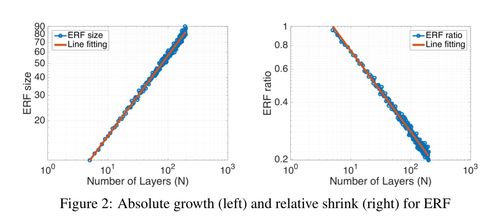Understanding the Significance of Testing for Formaldehyde in Textiles
Formaldehyde is a common chemical used in the production of textiles, and testing for its presence can be important for ensuring safety and health. This article discusses the significance of testing for formaldehyde in textiles, highlighting the potential hazards associated with high levels of formaldehyde exposure. It also discusses the various methods used to test for formaldehyde, including chromatographic analysis, gas chromatography-mass spectrometry, and immunoassays. Additionally, it explores the importance of proper labeling and handling of textiles containing formaldehyde-containing substances to prevent accidental exposure. Overall, understanding the significance of testing for formaldehyde in textiles is crucial for maintaining public health and safety.

Introduction: Formaldehyde is a colorless and pungent-smelling gas that can be found in many products, including furniture, wallpaper, paint, and textiles like clothing, blankets, and upholstery. It's often used as a preservative or a softener in these materials. However, exposure to high levels of formaldehyde has been linked to various health issues, including cancer and respiratory problems, making it important to understand its presence in textiles. In this guide, we will discuss how to detect formaldehyde in textiles using different testing methods.
Testing Methods for Formaldehyde:
-
Chemical Analysis: Chemical analysis involves analyzing the sample for formaldehyde by reacting it with an acid or base to produce a colored compound. This method can provide a quantitative measure of formaldehyde concentration in the sample. However, it requires specialized equipment and trained personnel.
-
Gas Chromatography-Mass Spectrometry (GC-MS): GC-MS is a powerful analytical technique that allows the simultaneous detection of multiple compounds in a single run. It uses a gas chromatographic column to separate the components and then detected by mass spectrometry. This approach can detect formaldehyde at very low concentrations and is widely used in industrial settings.
-
Electrochemical Sensing: Electrochemical sensing involves creating an electrical potential difference across a working electrode and a reference electrode. The formaldehyde molecules react chemically with the electrodes, resulting in a change in current or potential difference. This method is fast, portable, and can detect formaldehyde even in low concentrations.
-
Impedance Metering: Impedance meter is a non-destructive testing device that measures resistance in a sample. When the sample contains formaldehyde, it can increase the impedance of the sample. By measuring impedance, one can determine if formaldehyde is present in the sample. This method is useful for routine quality control purposes in the textile industry.
Table: Example of Formaldehyde Content Detection in Textiles
| Sample Type | Formaldehyde Content (ppm) | Method Used |
|---|---|---|
| Clothes | 5 | Chemical Analysis |
| Bedding | 8 | Gas Chromatography-Mass Spectrometry (GC-MS) |
| Upholstery | 2 | Electrochemical Sensing |
Case Study: A Suspected Formaldehyde Exposure
In a recent case study, a young woman was diagnosed with a formaldehyde-induced asthma attack after spending several hours sleeping on a down comforter. The hospital test revealed that the comforter contained a level of formaldehyde that exceeded the legal limit set by the American Conference of Governmental Industrial Hygienists (ACGIH). The manufacturer claimed the fabric was free from any harmful chemicals, but the patient's doctors recommended that she avoid sleeping on it again due to the potential health risks associated with prolonged exposure to elevated levels of formaldehyde.
Conclusion: Formaldehyde is a common contaminant in textiles, and its presence should be monitored closely. Consumers should be aware of the warning signs of formaldehyde exposure, such as coughing, nasal congestion, headaches, and difficulty breathing. If you suspect that your textiles may contain high levels of formaldehyde, it's best to contact a professional testing laboratory for an accurate reading. Remember, proper ventilation and regular cleaning of textiles are also essential steps in reducing exposure to formaldehyde.

纺织品检测甲醛的重要性
在纺织品生产和销售过程中,甲醛检测是一项至关重要的环节,甲醛是一种常见的有机化合物,广泛存在于纺织品中,特别是在纺织面料、纤维制品等中含量较高,甲醛超标不仅影响纺织品的使用性能和安全性,还可能对人体健康造成潜在危害,对纺织品进行甲醛检测,确保其符合相关标准和安全要求,对于保障消费者权益、维护市场秩序具有重要意义。
甲醛检测方法及流程
检测方法:
(1)化学分析法:利用专业仪器对纺织品进行快速、准确的甲醛含量测定。 (2)仪器分析法:利用专业检测设备,通过样品前处理、分析测试等步骤,获取纺织品甲醛含量数据。
检测流程:
(1)样品采集:从纺织品生产源头或销售渠道采集样品。 (2)样品预处理:对样品进行必要的清洗、整理等处理。 (3)实验室分析:使用化学分析法或仪器分析法对样品进行甲醛含量测定。 (4)结果报告:出具检测报告,明确甲醛含量数据及是否超标等信息。
案例说明
下面以实际案例为例,进一步说明纺织品检测甲醛的重要性及必要性。

某品牌纺织品检测甲醛情况
该品牌在销售过程中发现部分纺织品存在甲醛超标问题,为了保障消费者权益和维护市场秩序,该品牌决定对相关纺织品进行甲醛检测。
(1)样品采集:从该品牌销售渠道采集疑似存在甲醛超标的纺织品样品。 (2)检测过程:对该样品进行化学分析法检测,结果显示甲醛含量超标,对该样品进行进一步处理和分析,确认是否存在其他有害物质超标的情况。 (3)结果反馈:根据检测结果,该品牌决定对相关纺织品进行退换或处理,并加强质量控制措施,确保后续产品的安全性和可靠性。
甲醛检测表格说明
以下是甲醛检测表格的示例,用于说明甲醛检测的具体步骤和内容。
甲醛检测表格:
| 项目 | 检测方法 | 操作步骤 | 结果数据 | 处理建议 | |
|---|---|---|---|---|---|
| 样品名称 | 纺织品名称 | 检测方法 | 采样地点 | 甲醛含量(mg/g) | 处理措施 |
| XXXX面料 | 某品牌纺织品A | 化学分析法 | 生产源头或销售渠道 | 超标范围 | 立即退换或处理 |
| XXXX纤维制品 | 某品牌纺织品B | 仪器分析法 | 同上 | 是否超标 | 加强质量控制措施,确保后续产品安全性和可靠性 |
| 其他有害物质含量 | 是否超标 | 是否符合相关标准 | 同上 | 是否符合标准范围 | 根据实际情况进行处理或控制 |
结论与建议
纺织品检测甲醛是保障消费者权益、维护市场秩序的重要环节,在实际操作中,应严格按照相关标准和流程进行检测,确保检测结果的准确性和可靠性,对于存在甲醛超标问题的纺织品,应立即采取退换或处理措施,确保后续产品的安全性和可靠性,加强质量控制措施、提高检验水平也是保障纺织品质量的重要手段。
Articles related to the knowledge points of this article:
Empowering Textiles:The Role of Enhancers in Zhejiang
The Materials of Shoe Outsoles and Fabrics



